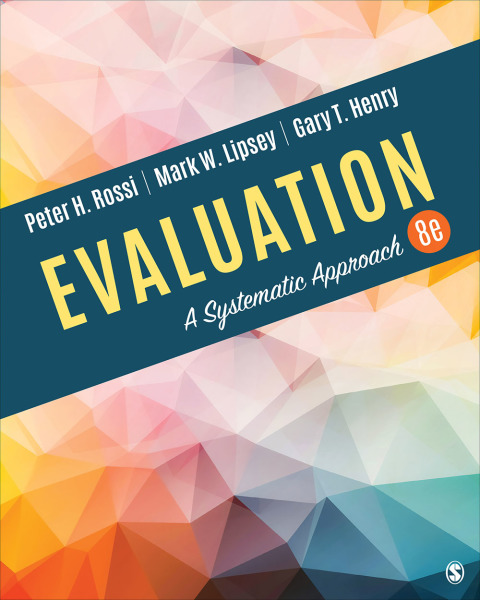Description
Efnisyfirlit
- Preface
- Acknowledgments
- About the Authors
- 1 | What Is Program Evaluation and Why Is It Needed?
- What Is Program Evaluation?
- Why Is Program Evaluation Needed?
- Systematic Program Evaluation
- The Central Role of Evaluation Questions
- The Five Domains of Evaluation Questions and Methods
- Summary
- Key Concepts
- 2 | Social Problems and Assessing the Need for a Program
- The Role of Evaluators in Diagnosing Social Conditions and Service Needs
- Defining the Problem to Be Addressed
- Specifying the Extent of the Problem: When, Where, and How Big?
- Defining and Identifying the Target Populations of Interventions
- Describing Target Populations
- Describing the Nature of Service Needs
- Summary
- Key Concepts
- 3 | Assessing Program Theory and Design
- Evaluability Assessment
- Describing Program Theory
- Eliciting Program Theory
- Assessing Program Theory
- Possible Outcomes of Program Theory Assessment
- Summary
- Key Concepts
- 4 | Assessing Program Process and Implementation
- What Is Program Process Evaluation and Monitoring?
- Perspectives on Program Process Monitoring
- Assessing Service Utilization
- Assessing Organizational Functions
- Summary
- Key Concepts
- 5 | Measuring and Monitoring Program Outcomes
- Program Outcomes
- Identifying Relevant Outcomes
- Measuring Program Outcomes
- Monitoring Program Outcomes
- Summary
- Key Concepts
- 6 | Impact Evaluation: Isolating the Effects of Social Programs in the Real World
- The Nature and Importance of Impact Evaluation
- When Is an Impact Evaluation Appropriate?
- What Would Have Happened Without the Program?
- The Logic of Impact Evaluation: The Potential Outcomes Framework
- The Fundamental Problem of Causal Inference: Unavoidable Missing Data
- Summary
- Key Concepts
- 7 | Impact Evaluation: Comparison Group Designs
- Bias in Estimation of Program Effects
- Potential Advantages of Comparison Group Designs
- Comparison Group Designs for Impact Evaluation
- Cautions About Quasi-Experiments for Impact Evaluation
- Summary
- Key Concepts
- 8 | Impact Evaluation: Designs With Strict Controls on Program Access
- Controlling Selection Bias by Controlling Access to the Program
- Key Concepts in Impact Evaluation
- When Is Random Assignment Ethical and Practical?
- Application of the Regression Discontinuity Design
- Choosing an Impact Evaluation Design
- Summary
- Key Concepts
- 9 | Detecting, Interpreting, and Exploring Program Effects
- The Magnitude of a Program Effect
- Detecting Program Effects
- Examining Variation in Program Effects
- The Role of Meta-Analysis
- Summary
- Key Concepts
- 10 | Assessing the Economic Efficiency of Programs
- Key Concepts in Efficiency Analysis
- Conducting Cost-Benefit Analyses
- Conducting Cost-Effectiveness Analyses
- Summary
- Key Concepts
- 11 | Planning an Evaluation
- Evaluation Purpose and Scope
- Data Collection, Acquisition, and Management
- Data Analysis Plan
- Communication Plan
- Project Management Plan
- Summary
- Key Concepts
- 12 | The Social and Political Context of Evaluation
- The Social Ecology of Evaluations
- The Profession of Evaluation
- Evaluation Standards, Guidelines, and Ethics
- Utilization of Evaluation Results
- Epilogue: The Future of Evaluation
- Summary
- Key Concepts
- Glossary
- References
- Author Index
- Subject Index







Reviews
There are no reviews yet.